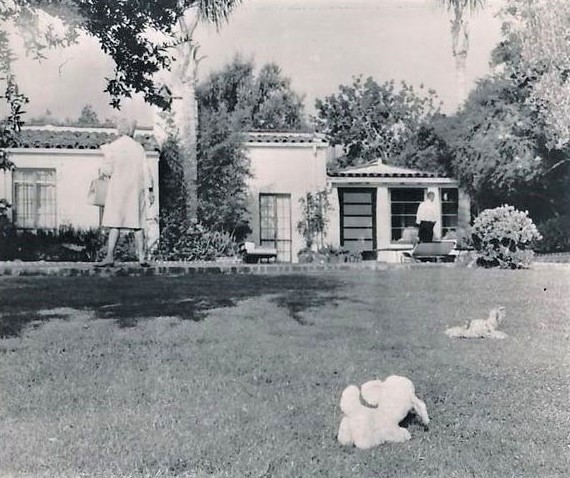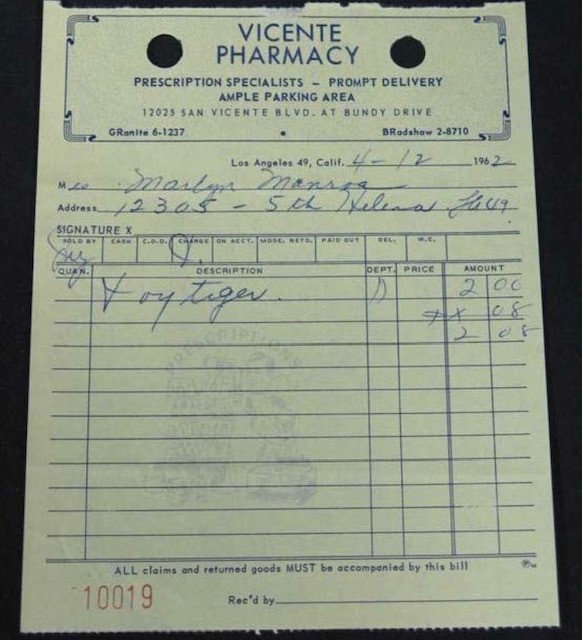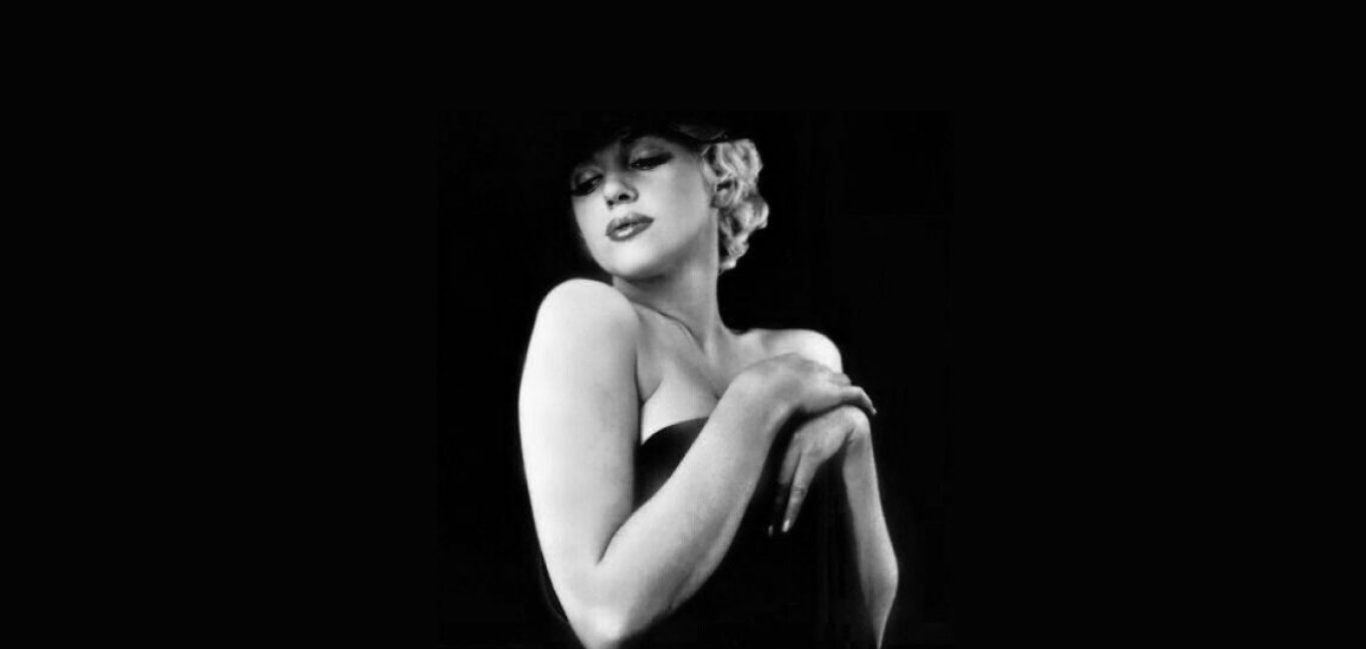The Sinister Toy Tiger
Goddess and Netflix
The Mystery of Marilyn Monroe: The Unheard Tapes
June the 1st of this year will mark the 96th anniversary of the uncelebrated birth of Norma Jeane Mortenson. The inevitable passing of sixty plus five days will lead to August the 4th, a date that will mark the 60th anniversary of the tragic and untimely death of Norma Jeane’s unforgettable creation, Marilyn Monroe. Due to Marilyn’s exorbitant fame, the entertainment industry will undoubtedly use the occasion of her birth and her death to recycle and sell what Sarah Churchwell, eighteen years ago, correctly labeled the same bromides. Authors and producers that have already generated some income by promoting and selling those bromides, have started to queue at the head of Marilyn’s Pierce Brothers Cemetery crypt. Anthony Summers has become the most recent entrant into that queue: he has an updated publication to sell.
In 1985, the BBC used Summers’ then recently published pathography, Goddess: The Secret Lives of Marilyn Monroe, as the basis for a documentary entitled Say Goodbye to the President. Consequently, based on the updated version of that pathography, on April the 27th, Netflix plans to broadcast a brand spanking new documentary pertaining to Marilyn’s invariably labeled mysterious death, a documentary entitled The Mystery of Marilyn Mon-roe: The Unheard Tapes.
The unheard tapes. Entire books have been written about the numerous tapes allegedly obtained by all the BIG letter agencies, bureaus and sundry criminals, CIA FBI KGB MOB Hoffa Giancana Marcello Trafficante, obtained surreptitiously by the MOB’s slimy shamus henchmen, Barney Ruditsky, Bernard Spindel and, the slimiest of them all, Fred Otash. The documentary’s title, selected I assume by Netflix in consult with Anthony Summers, suggests that tape recordings heretofore never played for the public will be drawn through analogue playback heads during the Netflix documentary. Naturally, a few pertinent questions follow. Are these heretofore unheard tapes:
- Of Marilyn actually speaking with the middle Kennedy brothers during the many telephone and face to face conversations in which they purportedly engaged and all of which were purportedly taped by the previously mentioned agencies, criminals and slimy private-eyes;
- Of Marilyn actually making love with the middle Kennedy Brothers, perhaps the alleged to have occurred titillating JFK/RFK/MM threesome;
- Of Marilyn actually being murdered; or just
- Of Summers interviewing this or that testifier during the past four decades that he has pursued the facts and the truth about Marilyn’s many secret lives?
Unfortunately, I―unfortunately we will not know the answer to those questions until Netflix unveils their new documentary; however, like a bookish carnival barker, hawking the publication of his updated Marilyn pathography, and the new Netflix documentary, Summers wrote an article for Vanity Fair, a slick glossy that never passes on a juicy yarn involving Marilyn. Published two weeks ago on March the 23rd, Summers’ article collided against several topics regarding his updated version of Goddess and the Netflix documentary; and the Irish name-dropper mentioned a few new names that he has evidently added to his inordinately long list of dropped names. Those topics and persons, their alleged names, may or may not be relevant, may or may not add any verity to testimony previously presented by Summers as issuing from anonymous sources. The alleged associations of the testifiers with Marilyn, their alleged relationships with her, and the context of their testimony, can only be evaluated after watching the documentary. However, in his Vanity Fair article, Summers repeated an anecdote that also appeared in his 1985 version of Goddess; and Summers’ treatment of the anecdote exemplifies his modus operandi, how, like an adroit puppeteer, he manipulates his sources and their alleged stories.
Agnes Flanagan and the Sinister Toy Tiger
According to Summers, Agnes Flanagan, one of Marilyn’s many hairdressers, visited the actress at Fifth Helena on August the 4th, probably in the late morning. Not long after Agnes arrived, a messenger appeared and delivered a mysterious and unidentified package. Marilyn opened it and walked out to the pool carrying its contents, Summers divulged; and he then revealed the contents of the package: a stuffed toy tiger. Marilyn did not utter a word as she sat down by the pool, holding the tiger and Agnes thought that Marilyn appeared to be terribly, terribly depressed. Summers set off the preceding three words in quotation marks, as if the hairdresser had uttered those words to the author; however, Agnes did not offer any type of explanation, did not say why she thought the delivery of the toy tiger had abruptly depressed Marilyn; and since her host had lapsed into a sullen silence, Agnes, wholly at a loss, got up and left.
Summers then began to speculate about what he labeled one of the most bizarre incidents of a mysterious week-end; and he wondered if Marilyn possibly discovered a written, devastating message that arrived with the toy tiger―or was the stuffed object itself the message? Summers then disclosed that an actual, full-size stuffed tiger had pride of place in Robert Kennedy’s office, not an irrelevant fact, he noted. Summers then informed his readers: Marilyn, at all events, now lost control,1All quotations unless noted otherwise can be found on pages 442 and 443 in Chapter 43 of Goddess: The Secret Lives of Marilyn Monroe, published by Open Road Integrated Media, New York, 2012.
According to Sarah Churchwell’s scholarly analysis of Marilyn’s many lives, in the 1985 edition of Goddess, the toy tiger anecdote, and Summers deft presentation of it, appeared on pages 350 through 352.an odd declaration. Since Marilyn would be dead a few hours later, to what events was Summers referring? But then, I digress.
Sunday morning, August the 5th, many photographers descended on Marilyn’s property and snapped many photographs of both the interior and the exterior of Fifth Helena Drive. One such photograph, as denoted by Summers in both Goddess and his Vanity Fair article, depicted two small stuffed animals abandoned near Marilyn’s swimming pool. One of them could be a tiger,2“Marilyn Monroe’s Final Hours: Nuke Fears, Mob Spies, and a Secret Kennedy Visitor” by Anthony Summers, Vanity Fair, March 23, 2022.Summers asserted.
More than a few writers have accepted Summers’ stuffed tiger tale. In his goofy 2012 publication about Marilyn’s life and death, Coroner’s Cold Case #81128: Marilyn Monroe, Peter Wright wrote: […] Marilyn received a present by messenger. It was a small, stuffed toy tiger that meant nothing to anyone except Marilyn, for its message was very special, and very dark. That present crashed her world (KE:34). Wright did not mention a visit by Agnes Flanagan or offer any explanation regarding why the toy animal represented a special and dark message to Marilyn, a mes-sage that destroyed her world. Six years earlier, in her wild 2006 memoir, My Wild Wild Life, Jeanne Carmen alleged that she received her account of the toy tiger anecdote directly from Marilyn during a telephone call with the actress on the evening of August the 4th. Jeanne then used the tiger tale to fabricate an elaborate and humorous yarn about a love quadrangle involving Marilyn and her publicist, Pat Newcomb, Robert Kennedy and Ethel Kennedy. Additionally, in the globally connected world of the 21st century, Summers’ stuffed tiger tale has appeared regularly on Marilyn Monroe websites, with variations, of course. Those websites often feature wildly inaccurate articles written by journalists who play fast and loose with the truth by ignoring the facts.
But then, what is the truth and what are the facts?
I’ll start with this: there is no evidence at all that Agnes Flanagan visited Marilyn on the morning of August the 4th in 1962, not at any time. Donald Spoto, who comments on Agnes’ interactions with Marilyn more than a few times, does not mention a Saturday morning visit by the hairdresser or the stuffed tiger tale. Other legitimate biographers and conspiracists authors mention the Summers’ anecdote and others do not.
But wait. We have Summers’ written account, a firsthand account delivered to Summers by the hairdresser herself who witnessed the delivery of the package and Marilyn’s obvious negative reaction. Right? Well, not exactly. Summers implied that he interviewed Agnes Flanagan and even used quotation marks to indicate testimony that Summers actually heard; but plainly that implication is simply not supported by Summer’s own record: his published source notes. According to the author’s source notes for Chapter 43, page 443, he interviewed a man by the name of Don Feld: Flanagan visit: int. Don Feld, 1985 (638). Therefore, Feld’s testimony was hearsay; and his story, once repeated by Summers, fell into the category of gross third hand hearsay. Furthermore, Summers did not stipulate that Feld’s original source was Agnes Flanagan: Don Feld possibly repeated testimony from an acquaintance who had a friend with a cousin who knew and received the story from Agnes Flanagan’s podiatrist.
But wait. We have the photograph mentioned by Summers which depicts the stuffed tiger abandoned by Marilyn’s swimming pool. Right? Well, not exactly. As verified by the photograph below, the stuffed animals were not anywhere near Marilyn’s swimming pool.

Also, the stuffed animals can be easily identified as a dog’s chew toys, a lamb in the foreground and another stuffed animal slightly up an obvious declination away from Marilyn’s swimming pool. That animal, which Summers asserted could be a tiger, was most certainly a floppy-eared dog, not a tiger.3A caption that I cropped from the photograph, identified that animal as a teddy bear, also clearly an incorrect identification.A member of David Marshall’s DD Group, Sabine Grella, attended a Christie’s auction (possibly the 1999 event) that sold the stuffed animals appearing in the above photograph. Sabine testified that the animals sold at auction were a stuffed lamb and a dog and each was heavily worn and gnawed.4Marshall, David. The DD Group: An Online Investigation Into the Death of Marilyn Monroe. Lincoln: iUniverse. Kindle Edition, 2005. Chapter: “Timeline: The Morning of Saturday, August 4, 1962 8:00 AM to Noon.” Section: “Interlude: The Stuffed Animal Story.”David and his investigative group finally concluded that the stuffed toys depicted in the above photograph had been at the house long before August the 4th; and they were not a secret message that depressed Marilyn immediately; they were nothing more than dog toys. […] like so many other stories that have cropped up concerning Marilyn’s last days, David asserted, the Stuffed Animal story is likely fiction.5Ibid.
But what about the stuffed toy tiger? Should we conclude, along the lines of the DD Group’s conclusion, that the mysterious tiger did not even exist? And if it did exist at that time, from where and from whom did it cometh? And also, what about Robert Kennedy’s stuffed tiger mentioned by Anthony Summers, the one that possessed Pride of Place?
Even though I have not been able to find photographic evidence that a stuffed toy tiger actually existed, a receipt from Vicente Pharmacy conclusively proves that Marilyn, for the huge sum of $2.08, purchased a toy tiger on April the 2nd in 1962.6Receipt provided by Gary Vitacco-Robles.

Of course, the receipt does not tell us why Marilyn purchased the toy tiger; and the sum she paid in 1962 equals approximately $20 US in today’s currency, a sum that could purchase a stuffed tiger larger than her small dog. Also, the receipt does not tell us what happened to the toy. Should we follow Anthony Summers’ lead and speculate? If Marilyn bought the tiger as a chew toy for her Maltese Terrier, Maf, perhaps he destroyed the tiger during the four months leading to August; but, then again, perhaps Marilyn did not purchase the toy for Maf. Per-haps she invested the equivalent of $20 US for a gift that she gave to the child of an acquaintance or a friend, a large and plush stuffed animal, which her $2 could have purchased. Regardless of where the toy tiger landed, it was not a sinister message dispatched to Marilyn by John or Robert Kennedy, Ethel Kennedy or Pat Newcomb. In her memoir, Jeanne Carmen suggested that the stuffed tiger could have been dispatched by Pat Newcomb who, according to Jeanne according to Marilyn, also liked Robert Kennedy.
Summers referenced Arthur Schlesinger, Jr. as the source for the existence of Robert Kennedy’s life-size stuffed tiger. Over the years, the Kennedy biographer noted, the attorney general cluttered his justice department office with many objects, one of which was a life-size taxidermied big cat; but, Schlesinger noted, the Attorney General carefully explained to a foreign newspaperman that he had not shot the tiger himself (239).7Schlesinger, Jr., Arthur M. Robert Kennedy and His Times. New York: Mifflin Harcourt Publishing Company, 1978. Kindle Edition, 2002.
In fact, Indonesian President Sukarno presented the stuffed Sumatran tiger to Robert Kennedy as an expression of gratitude and appreciation from the Indonesian government: the attorney general had helped resolve a tense territorial conflict between Indonesia and the Dutch, and the resolution generally favored Indonesia.
Along with the Sumatran tiger, President Sukarno sent Robert Kennedy, Jr. two living Komodo dragons; but when the carnivorous lizards grew to a dangerous size, they were given to a nearby zoo. According to an article written by Kathleen O’Brien for Inside Jersey, Robert Kennedy, Jr. reported that the attorney general displayed the life-size tiger in his office only briefly before the tiger was transferred to Hickory Hill and given to the junior Robert Kennedy: I think my father gave me the tiger as a consolation. The photograph displayed below depicts a taxidermist, also named Robert Kennedy, restoring the worn and aging trophy.8“Robert F. Kennedy Jr.’s tiger being restored by a familiar name,” by Kathleen O’Brien, Inside Jersey, May 6. 2013.
<https://www.nj.com/news/2013/05/robert_f_kennedy_jrs_tiger_bei.html>

If Robert Kennedy willingly gave the stuffed tiger to his son, should we therefore conclude that Anthony Summers’ comment regarding the stuffed tiger’s pride of place in the attorney general’s office was nothing more than a pointed speculation; but then, did Summers know all the facts appertaining to his stuffed tiger anecdote?
It is all too easy, as frequently denoted, for shrewd and guileful authors to distort and misrepresent the facts regarding Marilyn Monroe and Robert Kennedy, particularly if those authors are driven by the pursuit of an agenda. Obviously the anecdote of the mysterious stuffed toy tiger was not presented by Anthony Summers with all of the factual background intact; he did not present firsthand testimony that he obtained by interviewing Agnes Flanagan, a fact a reader can only discover by investigating Summers’ source notes. Moreover, Summers did not present the actual facts about Robert Kennedy’s stuffed Sumatran tiger or the provenance of the stuffed tiger that Marilyn obviously purchased. By withholding facts from his readers, Anthony Summers’ appears to have engaged in attempted deception. That is wrong; that is journalistic malpractice; and as you watch the upcoming Netflix documentary, I hope you will keep Summers’ shenanigans firmly in your mind.
More to follow after the documentary has been aired by Netflix.
Special thanks to author Jim DiEugenio for his editing suggestions. This article has also been posted on Jim’s website, Kennedys and King, with slightly modified wording. Also, many thanks to Gary Vitacco-Robles for the Vicente Pharmacy receipt.
